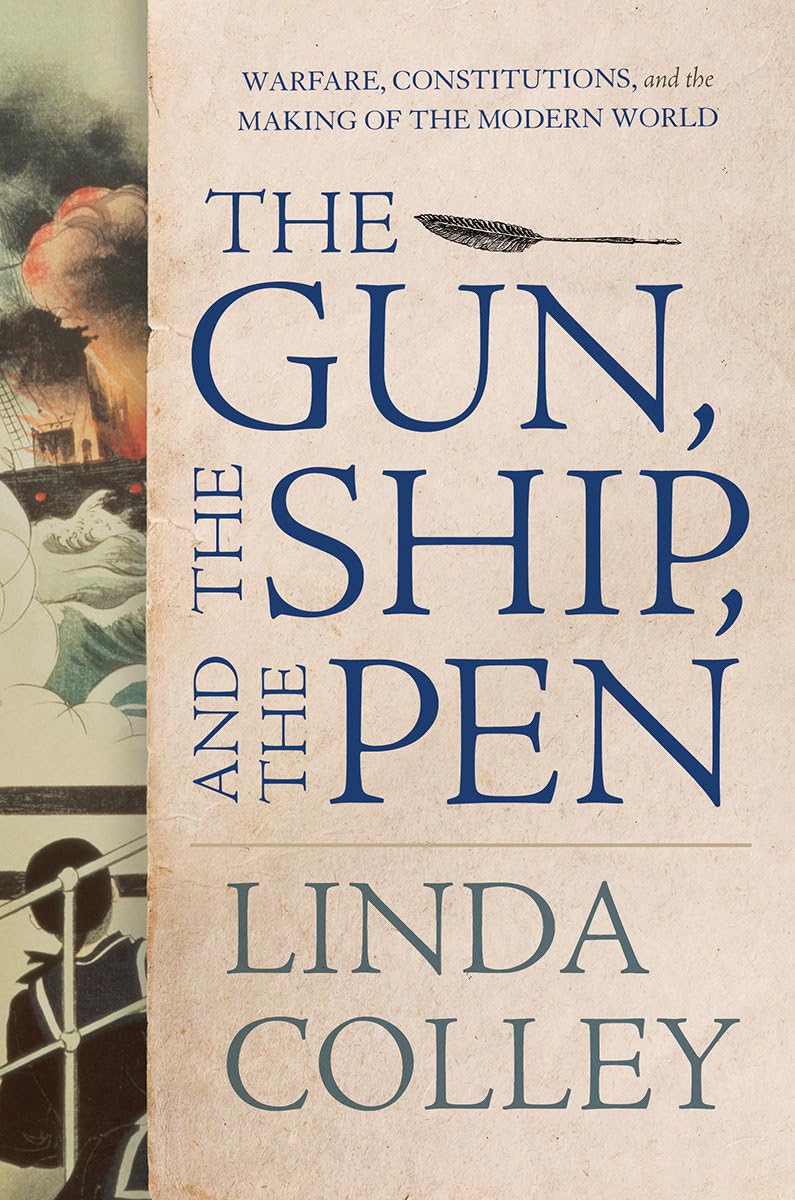“We need to broaden and diversify our gaze,” Linda Colley asserts in The Gun, the Ship, and the Pen. Her dazzling global history does just that, pulling away the blinkers of national stories, widening the focus, and showing—as the current pandemic has done—how interconnected all our lives and interests are. In this bold, packed account of the growth of written constitutions from the mid-eighteenth century until the advent of World War I, a web of connections spins between continents, entangling, clashing, looping back, increasing in speed and complexity. In a daring revisionist move that overturns explanations of the proliferation of constitutions “only by reference to the rise of democracy and the lure of certain (mainly Western) notions of constitutionalism,” Colley foregrounds warfare, particularly naval warfare, as the spur and points to the many military men involved in constitution-making: hence the guns and ships of the title, although the ships reappear in more peaceful guise, carrying nineteenth-century exiles and future leaders as they gather ideas across the world.
Colley is a professor of history at Princeton, and the broader perspective she demands of her readers also marks her own academic journey. Her first book, from 1982, was a study of Britain’s Tory Party; she went on to a highly original account of nation-making in Britons: Forging the Nation, 1707–1837 (1992) and then to the casualties and strains of empire in Captives: Britain, Empire, and the World, 1600–1850 (2002). Other books have intervened, all with a keen sense of issues concerning identity and the intermeshing of particular histories with wider struggles for power.
Now she takes on the entire world, at war and at peace. The initial lever for political change, she argues, was the Seven Years’ War (1756–1763), which spread beyond Europe to India, North and South America and the Caribbean, Senegal, and the Philippines. In the aftermath of this and later wars and revolutions, constitutional thinking developed both as a means of shoring up entrenched power and of turning successful rebellions into legitimate governments.
In the most basic terms, a written constitution is a single document that stands above the law, clarifying the relationship of the executive, legislature, and judiciary, as well as the duties and rights of citizens. One enduring notion is that such a document should embody certain values considered immutable, such as liberté, égalité, fraternité. Sadly, in practice, when regimes are concerned with asserting their power, “liberty” and “justice” come low on the list. But the belief in universal values goes back to the Enlightenment origins of this “new political technology,” as Colley calls written constitutions. Thus she shows Jeremy Bentham, queried by the German law professor Eduard Gans in 1831 on the relationship between lawmaking and local history, exploding, “Do you actually value history?… This upholder of mindlessness, this page on to which intellect and stupidity are equally written.” Furiously, Bentham asserted that written constitutions should instead, as Colley explains, “embody rational principles of liberal justice and rights that were of universal application.”
